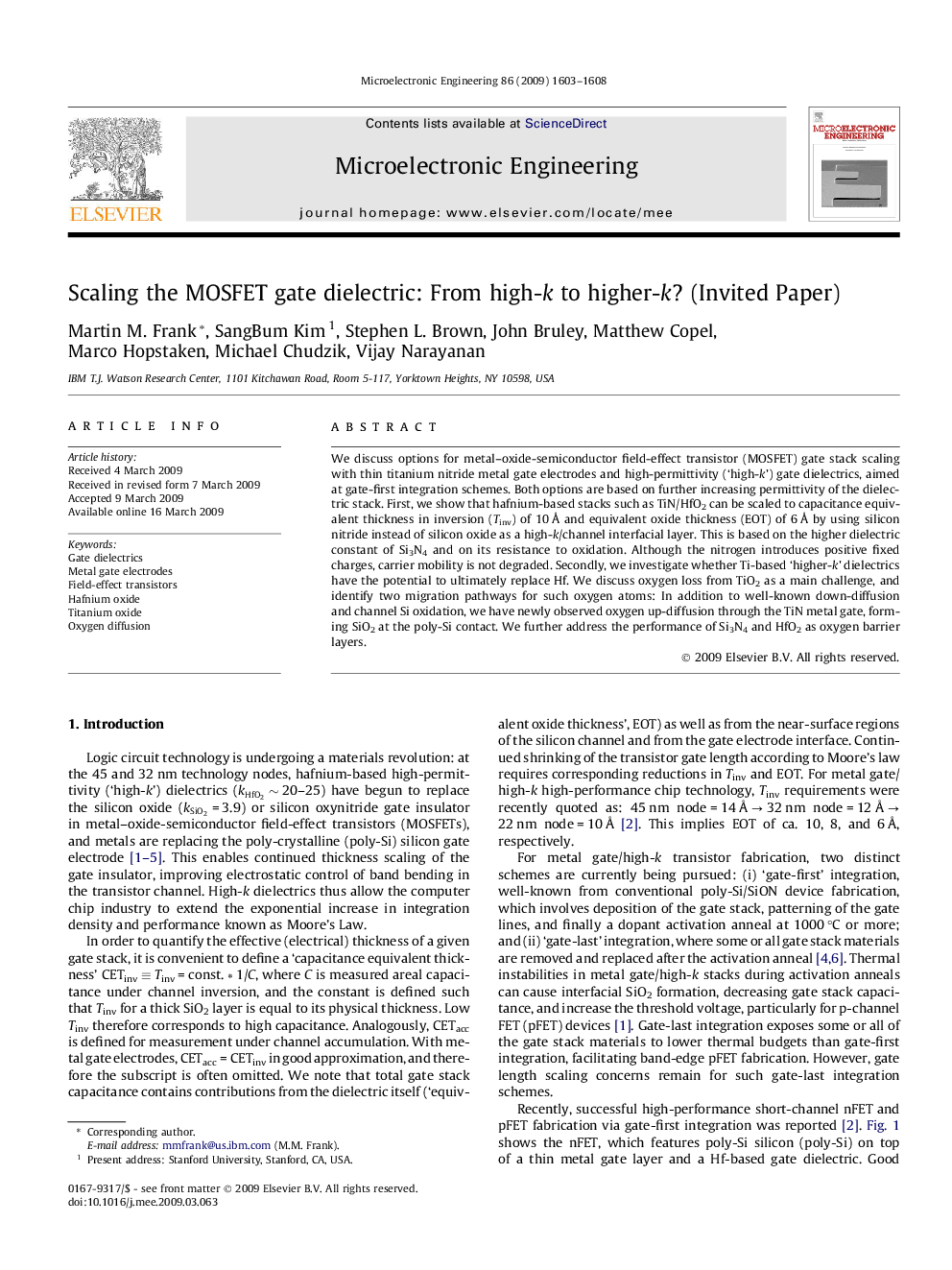| Article ID | Journal | Published Year | Pages | File Type |
|---|---|---|---|---|
| 543398 | Microelectronic Engineering | 2009 | 6 Pages |
We discuss options for metal–oxide-semiconductor field-effect transistor (MOSFET) gate stack scaling with thin titanium nitride metal gate electrodes and high-permittivity (‘high-k’) gate dielectrics, aimed at gate-first integration schemes. Both options are based on further increasing permittivity of the dielectric stack. First, we show that hafnium-based stacks such as TiN/HfO2 can be scaled to capacitance equivalent thickness in inversion (Tinv) of 10 Å and equivalent oxide thickness (EOT) of 6 Å by using silicon nitride instead of silicon oxide as a high-k/channel interfacial layer. This is based on the higher dielectric constant of Si3N4 and on its resistance to oxidation. Although the nitrogen introduces positive fixed charges, carrier mobility is not degraded. Secondly, we investigate whether Ti-based ‘higher-k’ dielectrics have the potential to ultimately replace Hf. We discuss oxygen loss from TiO2 as a main challenge, and identify two migration pathways for such oxygen atoms: In addition to well-known down-diffusion and channel Si oxidation, we have newly observed oxygen up-diffusion through the TiN metal gate, forming SiO2 at the poly-Si contact. We further address the performance of Si3N4 and HfO2 as oxygen barrier layers.
